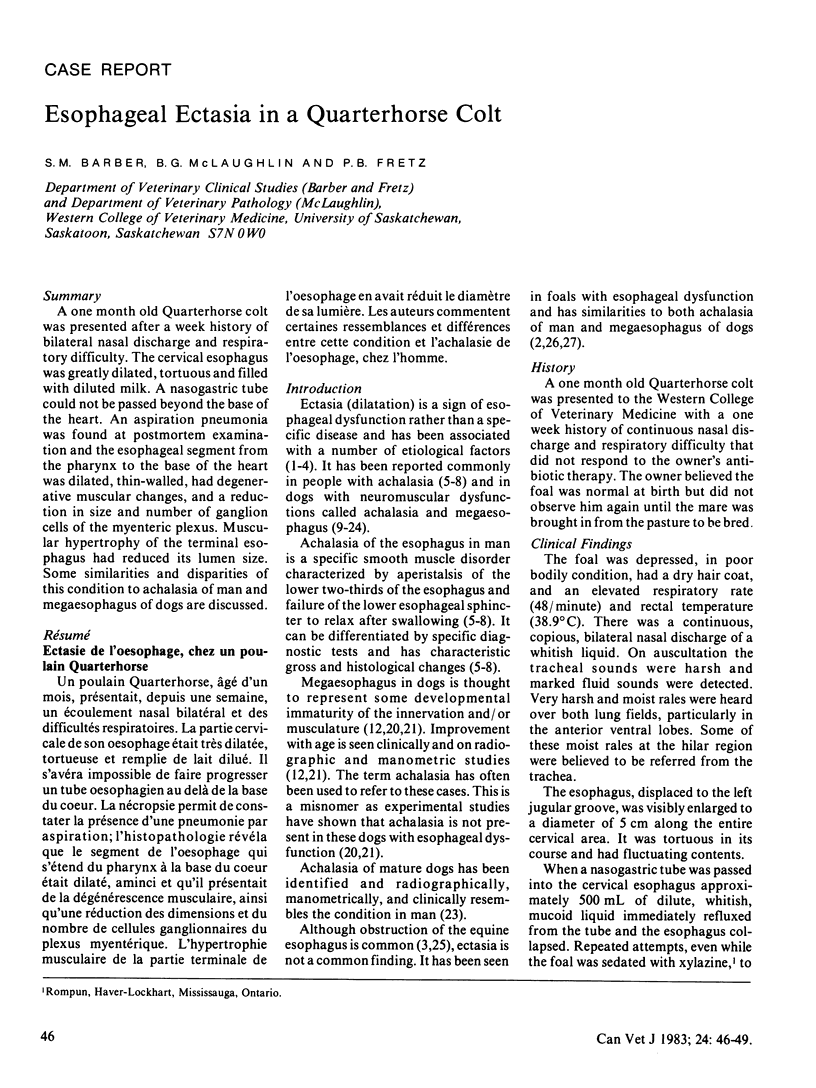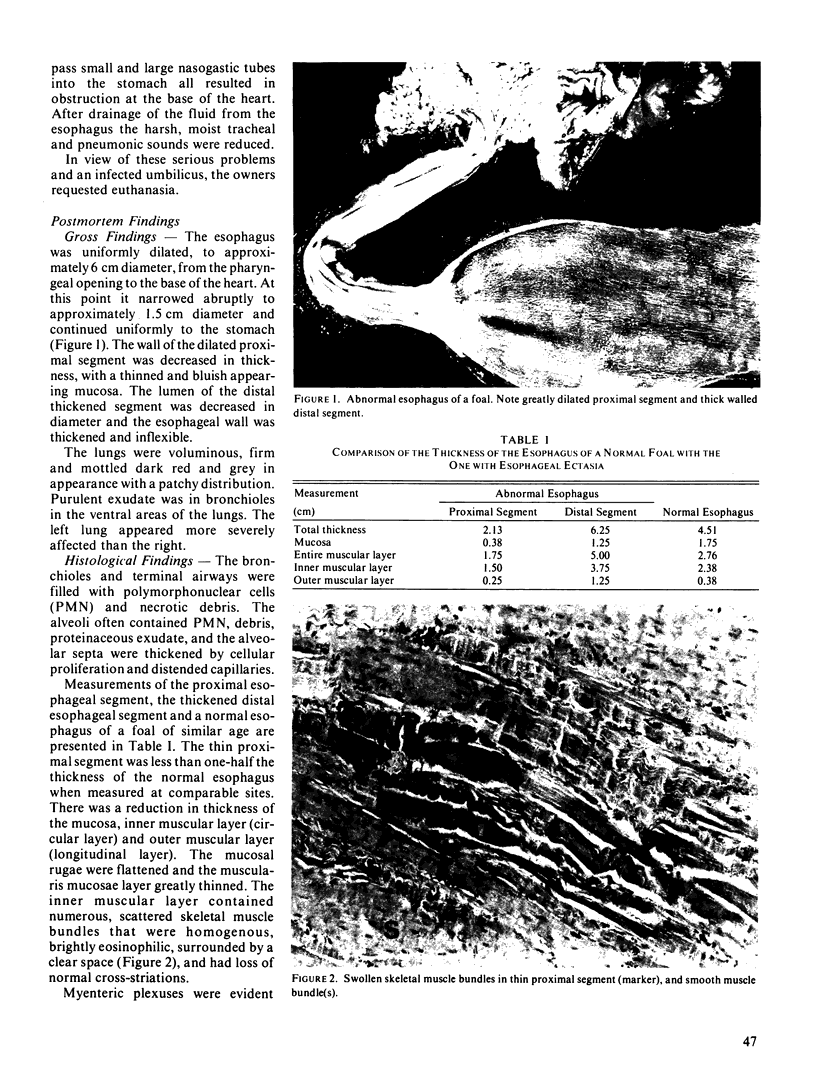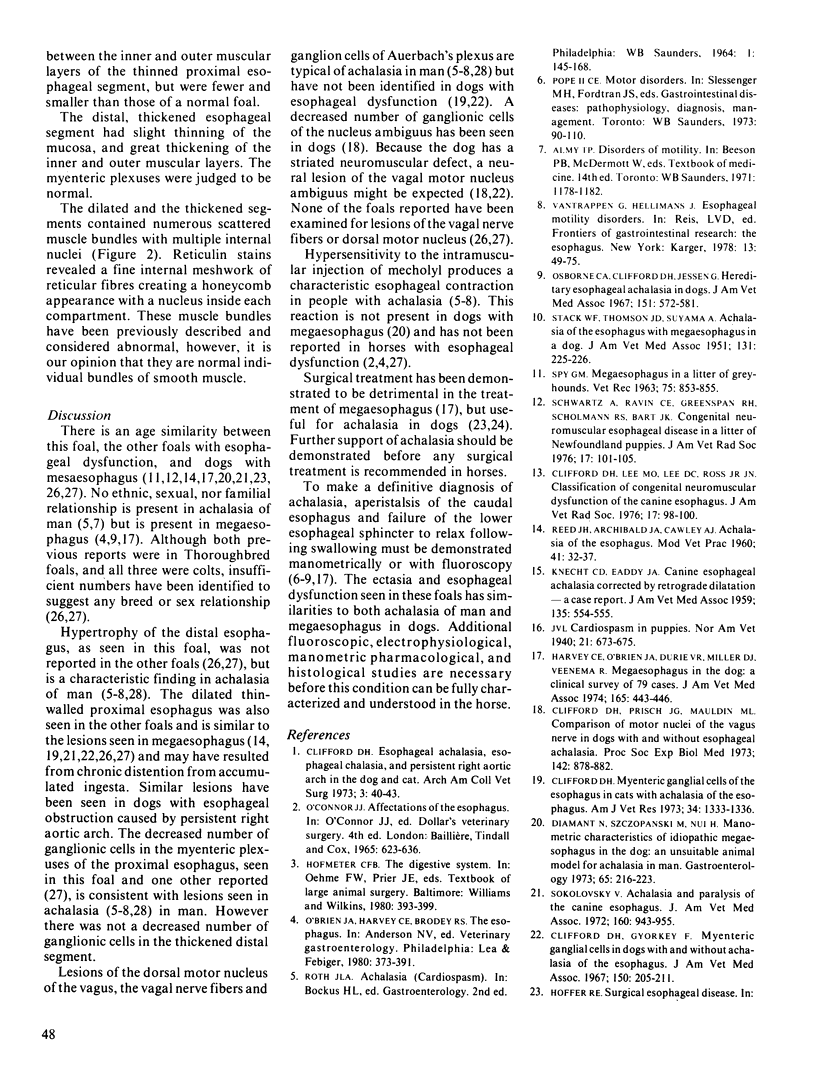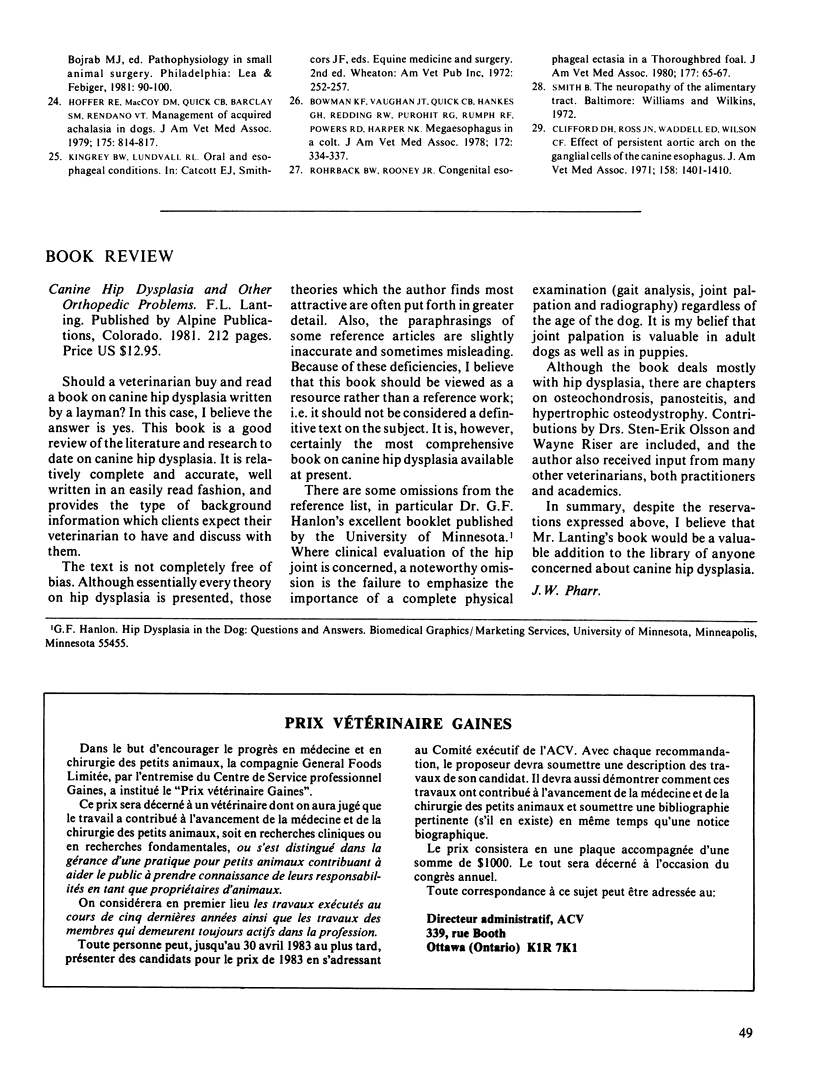Abstract
A one month old Quarterhorse colt was presented after a week history of bilateral nasal discharge and respiratory difficulty. The cervical esophagus was greatly dilated, tortuous and filled with diluted milk. A nasogastric tube could not be passed beyond the base of the heart. An aspiration pneumonia was found at postmortem examination and the esophageal segment from the pharynx to the base of the heart was dilated, thin-walled, had degenerative muscular changes, and a reduction in size and number of ganglion cells of the myenteric plexus. Muscular hypertrophy of the terminal esophagus had reduced its lumen size. Some similarities and disparities of this condition to achalasia of man and megaesophagus of dogs are discussed.
Full text
PDF



Images in this article
Selected References
These references are in PubMed. This may not be the complete list of references from this article.
- Bowman K. F., Vaughan J. T., Quick C. B., Hankes G. H., Redding R. W., Purohit R. C., Rumph P. F., Powers R. D., Harper N. K. Megaesophagus in a colt. J Am Vet Med Assoc. 1978 Feb 1;172(3):334–337. [PubMed] [Google Scholar]
- Clifford D. H., Gyorkey F. Myenteric ganglial cells in dogs with and without achalasia of the esophagus. J Am Vet Med Assoc. 1967 Jan 15;150(2):205–211. [PubMed] [Google Scholar]
- Clifford D. H. Myenteric ganglial cells of the esophagus in cats with achalasia of the esophagus. Am J Vet Res. 1973 Oct;34(10):1333–1336. [PubMed] [Google Scholar]
- Clifford D. H., Pirsch J. G., Mauldin M. L. Comparison of motor nuclei of the vagus nerve in dogs with and without esophageal achalasia. Proc Soc Exp Biol Med. 1973 Mar;142(3):878–882. doi: 10.3181/00379727-142-37136. [DOI] [PubMed] [Google Scholar]
- Clifford D. H., Ross J. N., Jr, Waddell E. D., Wilson C. F. Effect of persistent aortic arch on the ganglial cells of the canine esophagus. J Am Vet Med Assoc. 1971 Apr 15;158(8):1401–1410. [PubMed] [Google Scholar]
- Diamant N., Szczepanski M., Mui H. Manometric characteristics of idiopathic megaesophagus in the dog: an unsuitable animal model for achalasia in man. Gastroenterology. 1973 Aug;65(2):216–223. [PubMed] [Google Scholar]
- Harvey C. E., O'Brien J. A., Durie V. R., Miller D. J., Veenema R. Megaesophagus in the dog: a clinical survey of 79 cases. J Am Vet Med Assoc. 1974 Sep 1;165(5):443–446. [PubMed] [Google Scholar]
- Hoffer R. E., MacCoy D. M., Quick C. B., Barclay S. M., Rendano V. T. Management of acquired achalasia in dogs. J Am Vet Med Assoc. 1979 Oct 15;175(8):814–817. [PubMed] [Google Scholar]
- KNECHT C. D., EADDY J. A. Canine esophageal achalasia corrected by retrograde dilatation--a case report. J Am Vet Med Assoc. 1959 Dec 1;135:554–555. [PubMed] [Google Scholar]
- Osborne C. A., Clifford D. H., Jessen C. Hereditary esophageal achalasia in dogs. J Am Vet Med Assoc. 1967 Sep 1;151(5):572–581. [PubMed] [Google Scholar]
- Rohrbach B. W. Congenital esophageal ectasia in a thoroughbred foal. J Am Vet Med Assoc. 1980 Jul 1;177(1):65–67. [PubMed] [Google Scholar]
- STACK W. F., THOMSON J. D., SUYAMA A. Achalasia of the esophagus with megaesophagus in a dog. J Am Vet Med Assoc. 1957 Sep 1;131(5):225–226. [PubMed] [Google Scholar]
- Sokolovsky V. Achalasia and paralysis of the canine esophagus. J Am Vet Med Assoc. 1972 Apr 1;160(7):943–955. [PubMed] [Google Scholar]




